Dead car landscape + super Suby + RHD conversions + Dolomite Sprint - Morley's Workshop 430



|
Dead Chargers in the desert, racing Dolomites and Subaru Foresters - it's all happening at the Melbourne Block Centre
MORLEY'S WORKSHOP
I love getting out back of beyond these days. My three-decades-old LandCruiser is now a regular visitor to the mulga and in the last four years or so has been to every State and Territory apart from Tassie and the ACT. (Tassie is on the to-do list; the ACT, er, we’ll see.)
Now, dead cars were once a part of the regional landscape until scrap metal became about $200 a tonne a few years ago and the scrappies started touring country areas buying up old cars that, at the time, weren’t worth much (if anything) beyond their scrap value. I hate to think how many salvageable old dears were crushed and turned into fridges and microwaves as part of this process.
However, the cost of running a truck out to farms and country towns eventually reached the point of no-profit once the distance involved became too great.
And the result of that is that the true, fair-dinkum, honest-to-goodness outback is still home to quite a few dead `uns.
My last trip took me into the East Pilbara of WA and, somewhere between the towns of Papunya and Kintore (google it) I found not just a dead Aussie car, but a vehicle that will have a lot of UC readers weeping into their kebabs as they read this.
I actually zoomed past the old girl at first, because even though the orange paint was a clue, the thing was so beaten to piss that it was only when I was almost past that I recognised the make and model. Yep, a VH Valiant Charger. Cue quick U-turn and much oohing and aahing from me and the mates I had along.
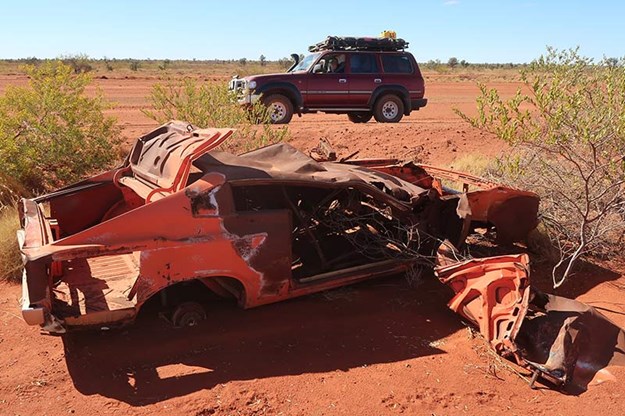
As you can see, of course, there’s not much left to salvage from this old girl, but the forensic scientist in me was still intrigued. Somebody, for instance, has used an angle-grinder to cut out and remove the little sections of the rear quarters where the Six Pack decal would have been. The black bonnet (what was left of it) was also an R/T clue, but who knows if it was an original R/T or a mock-up. Then again, who cares: Any VH Charger is retro royalty these days.
The engine (on the ground next to the shell) was a two-barrel Hemi that had either been removed from the car or thrown out when it crashed. But maybe the thing was just dumped out there many years ago when old Valiants were worth nothing. The big hole in the side of the engine block suggests that may have been the case.
The VH wasn’t the only early Aussie wreck I found but it was the one that made the biggest impression on my crew. I’d love to know the car’s back-story and how it got to this remote part of the continent on the edge of the Gibson Desert. Anybody seen it themselves or know the story?
The other question is whether it’s worth rescuing. Well, it’d be a hell of a recovery thanks to the sheer distance, the crook roads and the $3.40-a-litre fuel out that way. Plus, as you can see from the photos, the old girl is well past any real chance of rehabilitation. Even out in the dry, dusty desert, rust will still eventually get a hold. And yes, the tags were both missing!
HERE'S MY TIP
The Drill
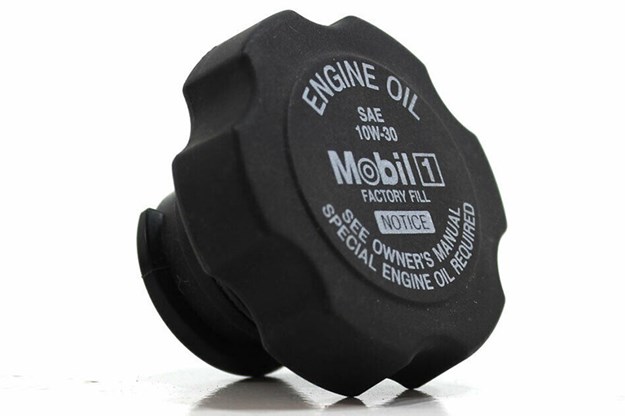
It always staggers me when somebody’s car runs out of oil over a period of weeks or months and the engine seizes. Okay, the engine going bang isn’t the surprising bit, it’s the fact that anybody can be so ignorant as to let their engine run out of oil. Me? When I’m on a road trip (or an off-road trip recently) I always do a quick underbonnet check every morning before hitting the key. Most recently, this showed up a coolant leak from a cracked radiator – I was able to limp 900km back to Alice Springs to fix it. Had I not checked, you can guarantee the rad would have let go big time somewhere in the middle of the Gibson Desert.
LETTERS:
But will it last?
 Modern high-performance engines produce impressive power without compromising durability
Modern high-performance engines produce impressive power without compromising durability
Been reading all the raves about the new Mercedes-AMG A45 engine; very impressive specs, but watching a video of the assembly, it appears to have only two-bolt mains. I don’t know if this is normal for four-pots as I prefer playing with eights of the V variety. (My GTS-R has just ticked over 6000km after two years).
But do you reckon this new high-tech wonder will survive the boost and 9:1 compression? I know the tech is amazing, but will these high-stress units last the distance?
Paul Hamilton,
Email
THIS HAS been an ongoing discussion among tappet-heads, Paul. There’s certainly a large proportion of UC readers that have their doubts over the long-term prospects of new engine designs. But I guess you’d expect that from us old codgers who reckon milk doesn’t taste like milk any more, kids have no respect and the sky was bluer in the old days. Nostalgia ain’t what it used to be, if you know what I mean.
Personally, I’m kind of with the too-strong-is-barely-strong-enough mob. I love things that are over-engineered and one of the things I really like about the LS1 V8 in the MBC tow-pig is the fact that is has six-bolt (count ‘em) main bearings. And that’s in a relatively low-stress big-inch engine that doesn’t rev beyond 5500rpm and isn’t tuned to make 200-horsepower per litre.
However, you can’t ignore the fact that modern engines are capable of some really amazing feats in terms of their output and hanging together while they’re at it. I guess the wild-card in a lot of this is forced induction which places huge stresses on everything it touches. Modern turbo-motors not only use higher-than-ever boost pressures (by production-engine standards) they also do it with high static compression ratios.
By and large, though, I think modern engines are stronger and more long-lived than their grand-daddies, provided you don’t start asking too much of them in terms of boost, compression and specific output. Think back to the old Holden grey motor and the Pommy stuff (a lot of it side-valve) around at the same time. Those engines routinely needed a valve-grind and de-coke every 10,000 miles or so and even the Holden grey (known at the time for being a tough customer) generally needed rings and bearings at about 60,000 miles. I reckon the view of many people that an engine is worn out at the 100,000km mark is a hang-over of these days. It’s a trap that many fall into, then elect to sell perfectly good cars to people like me for chump-change because they think the (not-very) old girl is getting worn out.
Meantime, I don’t recall anybody mentioning that their Honda Civic needed an overhaul at the same point on the odometer. And more modern locally-made cars seem to go forever if they’ve been serviced correctly. The secret is surely in design, manufacturing accuracy and improvements in metallurgy over the years. Stuff is just better these days; tolerances are tighter, and the materials superior. So it lasts longer and goes further.
However, as you point out, Paul, there are always the wild-cards like the highly-strung AMG two-litre you’ve used as your example. Frankly, while I don’t think it’ll be a hand-grenade as such, I doubt whether I’d be taking a punt on a second-hand one with, say, 200,000km or so on board. The stresses involved in such a powerplant are immense and that simply has to take a toll on the wearing bits inside. The chemistry may have improved, but you can’t get around physics.
That said, there are always other standouts, too. The original Mazda MX-5 with its little 1600cc engine that showed about 3200rpm at 100km/h in top and revved like a banshee, is still capable of 400,000km or so before most people lift the head for a look-see. But then you discover that this engine was designed to be turbocharged but was sold in the wee roadster in atmo form. Ah-ha!
Also, my own experience of a lot of European engineering is that it doesn’t appreciate Australian heat cycles. Many Euro-brands, for instance, have found that their machinery – which never gave an ounce of trouble on the Continent – suddenly croaks early when you expose it to Aussie ambient temps and usage patterns. Cylinder heads seem the main culprit, but even the plastic used in some of the cooling-system plumbing can die an early death out here.
Then there’s the question of culture and how long people in various parts of the world expect an engine to last. For us, it’s black arm-bands if an engine drops its guts before a quarter of a million kays have passed under its wheels, but in other places, that’s not the case. When early versions of the Chev LS1 V8 (six-bolt mains regardless) started burning oil, for instance, Holden in Australia was forced by a mob of angry owners on the war-path to replace a bunch of mills under warranty. But in the US where the same engine was burning the same oil, punters tended to just top them up between services and not complain. Because the car is much more of a disposable item in the States, so folks just figured they’d put up with this until they traded-in in a few months.
As an aside, I’m currently on the trail of an ex-taxi that has apparently clocked up a million kliks. I’ve been in touch with the owner, who’s agreed to let me drive it and see for myself what a million kays does to a Ford Fairlane. Stay tuned.
Not convinced

I’ve been following with interest the ongoing musings about the storage method of batteries impacting their performance. The theory about storage on concrete has been around for years and will probably be argued for time immemorial.
My question relates to the feedback from Mac Carter in issue 424 where he explores the idea that storing batteries on an uninsulated metal floor (such as in a battery box) is also detrimental to the battery. Every car I’ve owned has had the battery clamped down onto a metal battery shelf (except for the VE V8 where it was located in the boot). If metal was such a battery destroyer why do 99 per cent of vehicle manufacturers mount them on the metal battery shelf? I don’t know the answer. Just saying...
Darren Moss,
Adelaide SA
YEAH, THIS one doesn’t look like quitting for a while yet, does it? And for every person that has contacted me to support the theory, there’s been another that reckons it’s all superstition and witchcraft and should be ignored in 2019.
You’re right about a lot of car-makers being happy to place the OE battery on its backside on a bare metal tray in the engine bay, but a lot of cars I’ve owned over the years have also featured a little rubber or plastic pad to separate the battery’s case from the metal itself. However, it could be that a rubber pad is more about protecting a battery from the worst of the vibration and impacts that driving along a typical Aussie road will introduce, rather than the voltage-draining consequences of a cold, hard surface.
I’m drawn to the theory that the battery-on-concrete thing is a bit of a throwback to the days when battery casings were made from timber and garages were not the nice, snug watertight places they tend to be now. Which is why a cold, damp concrete floor could cause moisture to wick up the side of the timber battery box and send the battery to an early grave.
And yes, you’d expect a bare metal tray to be an even better conductor of wayward volts than a concrete floor, wouldn’t you? Even so, I’m, still happy to report that batteries stored at the Melbourne Bloke Centre are, indeed, stored on a piece of wood or a rubber pad rather than straight on the concrete floor. I’m still not sure if I agree with the theories of Mac Carter and his co-believers, but as my young nephew once said: "Eating brussels sprouts probably won’t kill me, but why take the chance?"
Reign Forester
 This Subie is as impressive on the bitumen as it is in the forest
This Subie is as impressive on the bitumen as it is in the forest
You mention lots of great cars in this great magazine, but has anyone looked at the Subaru Forester S edition made around 2010/11. I own one I bought new and it’s a great, great SUV. It has the same engine as the WRX of the day, and with a couple of minor mods, you soon get the same power as an STi.
Modifications which, of course, I have done.
Once the turbo is up and boosting, it’s a seriously quick car. It was $50k new, but compared to some of today’s cars, it seems a great buy, and second hand they are reasonably priced. The only downsides are a small petrol tank and average fuel economy.
At the lights, people think: Oh it’s just another Forester. Until I absolutely blow them away.
Subaru never made an STI wagon, but this is probably as close as we will ever get.
Also do you know how many were sold in Australia. I have tried but can’t seem to find this info.
Ash Matthews,
Email
YEP, I remember these when they were new and the over-riding impression was that it was a great car in most respects. The bigger, 2.5-litre engine was actually a slightly detuned version of the WRX mill and gave the thing some real punch while the Forester body was still all about practicality (if not actual svelte looks).
Meantime, the price was a bit scary and the interior was made from those terrible plastics Subaru was persisting with back then.
The five-speed auto was deemed a bit off the pace for the time (when most of its competition had at least six gears) and the fuel consumption was seriously crook, but explainable when you looked at the pace the thing could generate. Ultimately, though, the handling was limited by the same factors that limit any other SUV; that jacked up stance equals a higher centre of gravity and that meant body roll at speed. You can’t beat physics!
Anyway, good to hear that you’re happy with yours, Ash. And I’m not surprised you’ve wicked up the engine to full STi spec, because with the right tune that’s a pretty straight-forward process that shouldn’t shorten engine life to any noticeable degree. Combine that with Subaru’s reputation for building a tough engine, and you’re on a winner.
Second-hand, these are even better value, but if anybody out there is shopping for one, I’d want to know exactly what mods have been made and who made them before I shelled out the cash. Tuning is a great way to bump performance, but unless it’s been done properly, you could wind up with a grenade. But a Forester S that’s been tuned by a switched-on specialist like Brett Middleton at MRT would be an awesome little sleeper.
Just make sure any used Subaru you look at has a full service history, though, as these engines won’t tolerate skipped oil changes. The oilways are pretty small and a top-end ticking from the lifters is the first sign that all is not well. Unfortunately, by then, further damage has already been done, so a tickety-tick Subie is one to avoid.
Don’t call me Lefty
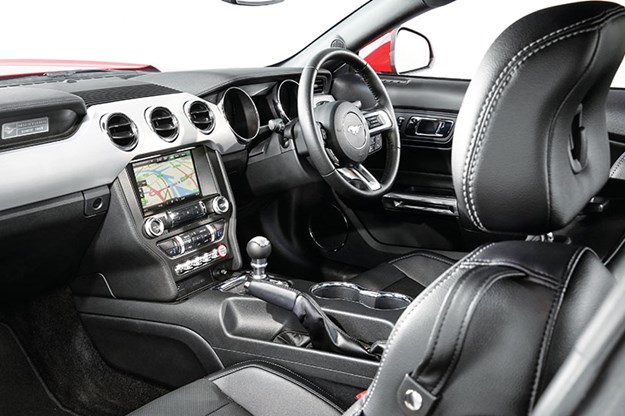
I’ve been looking to buy a muscle car for a few years now. I was excited when Ford released the Mustang in late 2015. I liked its DOHC motor but I would have liked it more if it was a 6.2, bringing it up to par with its rivals the Camaro and Hellcat.
Buy when I flicked through Motor magazine and saw that the centre console was still left-hand-drive, I was disgusted. I could not believe it! How can Ford sell a hotch-potch, half-baked, half-converted car into a right-hand-drive market? It seems I’d have to ask my passenger to apply the park-brake and look through the centre console for my licence while I mind the cups.
How disgusting is that? If Ford has left such an obvious thing as the centre console unconverted – a first, no other car manufacturer has ever done that – then what else have they left unconverted? I’ve been a Ford man all my life. I’m looking away now. Which means I also looked at the new Camaro. I was hoping that GM would build the factory RHD Camaro and, looking back, I could see that some General Motors product had a fair bit of flair and detailing.
Some of the Cadillacs were outstanding (the `58 comes to mind) and if they were to build a RHD Camaro, I knew it would be perfect. But horror seems to be following us around here in Oz.
Instead of a factory RHD Camaro, something that would hold its value in years to come, we got a LHD Camaro converted to RHD by HSV. What a load of crap!
No wonder people are asking $700,000 for a Phase 3 Falcon…there is nothing to take its place.
Peter Vossos
South Gundagai, NSW
JEEZ PETER, sounds like you’re taking the move to global car design personally. And while I feel your pain at the thought of losing our own home-grown car industry (one that served us pretty damn well, I would have thought) it’s also true that not all is lost.
Thing is, while I empathise, I can’t actually agree with some of your points of view. Let’s start with the Camaro RHD drive conversions HSV is doing in Melbourne. My own feeling is that it’s pretty harsh to be calling this process half-baked or that the end product amounts to an aftermarket converted car.
See, these Camaros are being sold through Holden dealerships, so you better believe that GM head office in Detroit is satisfied that the quality and design of the conversion is just as good as the factory’s. For that reason, I don’t think the end result is a compromise in any way, nor do I believe that it will have any effect on the retained values of these cars. Certainly the end result carries the full GM factory warranty of any other brand-new GM product.
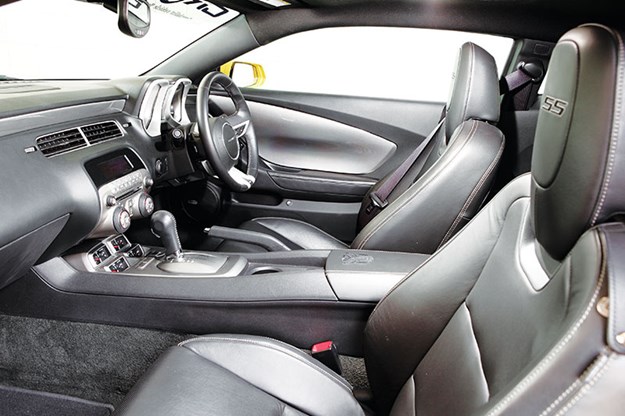 If you want to see a five-star quality RHD conversion, check out a Camaro
If you want to see a five-star quality RHD conversion, check out a Camaro
I’ve actually been through the HSV factory that does the conversions (which started with the RAM Truck product a couple of years ago). Frankly, it was very impressive. Any welding is done with proper jigs for correct alignment and wherever possible, HSV was using parts from the RAM’s original suppliers in the US. A great example was the steering box which needed to be a mirror-image of the LHD unit. Instead of finding a cheap supplier somewhere, HSV contacted the OE supplier of the LHD RAM steering box in the States and contracted it to build a RHD version of the same component. So quality was never going to suffer. In fact, you could argue that the reassembled (by HSV) trucks were actually of better build quality than the ones that arrived in containers as LHD Rams.
The Camaro involves a lot more disassembly for the conversion, so it’s not a simple process (which is why the Camaro costs more than the Mustang which is available ex-factory in RHD). But it’s important to remember that conversions are much better engineered these days. Another example is the work being done by Crossover Conversions (also in Melbourne) which is converting Dodge Challengers, Vipers, late Ford F-trucks and others with very impressive results. Fundamentally, I wouldn’t have a problem with any of these cars in terms of their integrity, design or build quality. And let’s face it, if the only way to get your hands on a new Camaro is to have somebody like HSV convert it, is that so bad?
I’d also argue with your statement that the centre console in the new Mustang is the only time a car-maker has taken the easy way out when switching from left to right-hand-drive. I’ve driven plenty of cars where the park-brake lever has been on the wrong side of the console, and most of those have also been factory right-hand-drive models. And what about indicator switches on the left-hand-side of the steering column? Or ignition switches on the `wrong’ side? Hell, I drove a US-made, factory-RHD SUV once that still had the LHD `driver’s’ foot rest in the passenger’s footwell!
My experience has also been that these things that might annoy you greatly in the first place, don’t produce such wrinkles in your psyche a few weeks down the track. So do me a favour, Peter: Go down to your nearest Camaro and Mustang dealer and drive an example of each with an open mind. I reckon if you’re honest about it, those lovely big V8s and rear-drive platforms will soon be making a bigger impression than which side the console is hinged on. My pick?
Thanks to the price advantage and the retro looks, my money is on a five-litre Mustang with a manual gearbox. Probably that techy looking silver colour.
Although the metallic blue is very tempting, too…
She’s a-mine
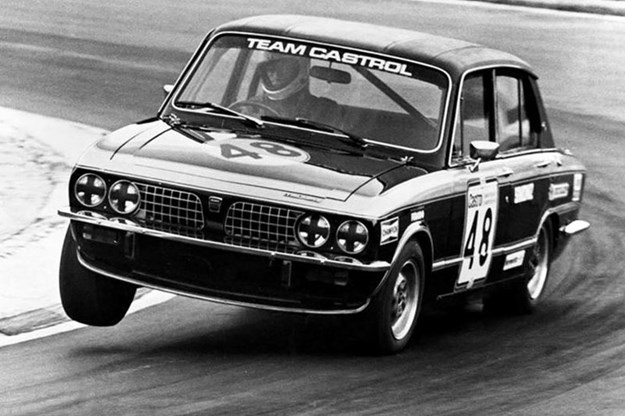
Just wanted to let you know I bought the Triumph Dolomite Sprint featured in your October 2016 article and that it’s on the road to recovery. It now has a newly restored subframe, front suspension, and the engine and gearbox are now back in the car. The brake calipers and tandem master cylinder have also been rebuilt. The welding on the suspension towers is old welding from an attempt to strengthen the car for rallying. I have ground the welds down a bit but they are still untidy. Have to live with that I think. Still a long way to go but getting there.
Don
Email
HEY DON, nice to see that the leads we publish are actually working to bring old cars and new owners together. Yours wouldn’t be the first car to have a few home-made modifications made in the name of rallying or racing but provided the mods haven’t reduced the car’s structural rigidity, then maybe living with a slightly untidy set of strut towers aint so bad.
I’ve never had much to do with Dolomites but I do confess to being a big fan of their styling. That Michelotti styling has aged remarkably well and I put the Dollie in the same basket as the BMW 2002, the Alfa Giulia, Mazda 1500 and the Volvo 144, that had simple but elegant glasshouse that stamped them as classic three-box designs.
My most vivid memory of a Dolomite was many, many years ago on a fairly empty road between a big town and the little town where I worked as a young dogs-body on a newspaper. One of my jobs was to drive the paste-up pages from my town to the printing shop in the big town. For this, I was issued the company Sigma wagon, a 2.6-litre, five-speed manual with no documented top speed (it would just keep winding out). This particular day, I got into a proper road race with a 1600cc Celica and a Dolomite Sprint (like I said, this was a l-o-n-g time ago). I had the top end, the Triumph had the jump out of corners and the Celica simply had a driver with huge bollocks. Which was no help when the highway patrol car came over the brow and nailed the Celica at some insane velocity. Me and the Dolomite slunk off in the distance, watching our mirrors and sweating. And no, you couldn’t do it now.
The Dolomite engine story is interesting. Saab was working on a new four-cylinder engine in the 1960s, but had run out of development money. So, it agreed to hand over the work to Triumph to finish the development and build the engine, providing Saab with 50,000 units. And before anybody out there poo-poos the engine, remember it was good enough to be the basis of one of the first production turbo cars (the Saab 99 Turbo) as well as one of the first modern multi-valve engines in the 16-valve Dollie Sprint.
Meantime, is anybody else spannering up their dream car at the moment? We’re looking for Reader’s Resto feature fodder, so get in touch and send a few photos. Don, let us know when your Sprint is up and running and we’ll tackle a feature on it, too.
TRIVIAL PURSUIT
Small Change
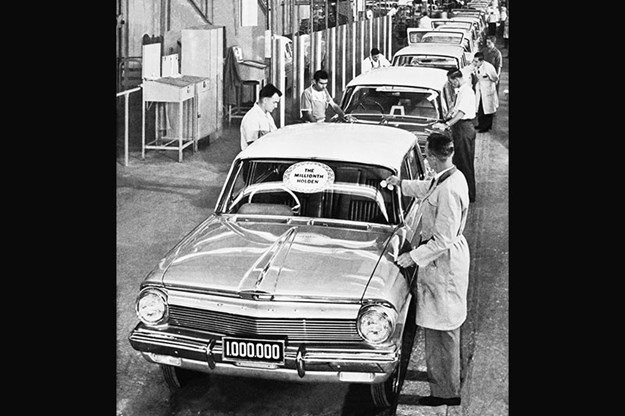
It seems completely incredible to somebody in a country where maybe a million new cars are sold each year, but the world (based on 2018 figures) is making roughly 192,000 cars each and every day. That makes our consumption about five days’ worth of global production.
The B's Knees
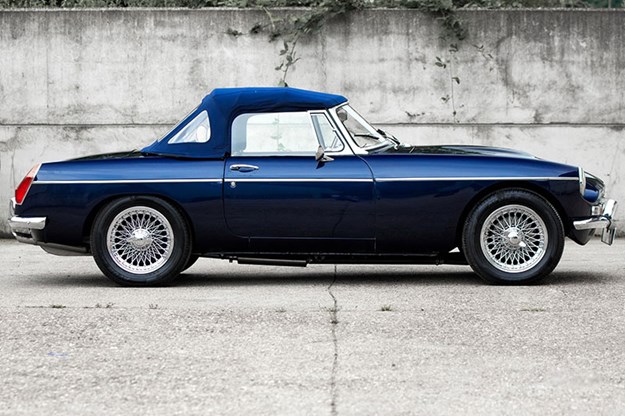
Maybe you know that between 1963 and 1972, the MGB roadster was assembled in Australia, first at Enfield in Sydney and then around the corner at Zetland in the plant that would build the Leyland P76. But did you know that no less than 9000 of the buggers were assembled and sold here? Local assembly stopped after the government changed the tariff goal-posts, making 85 per cent local content the new target. The MGB had just 45 per cent local content, and that was the end of that.
Write to Morley c/o uniquecars@primecreative.com.au or Unique Cars magazine, 379 Docklands Drive, Docklands, Victoria 3008
Classic Australian Family Car Value Guide home page
Muscle Car Value Guide home page
Japanese Classic Car Value Guide home page
Unique Cars magazine Value Guides
Sell your car for free right here
Get your monthly fix of news, reviews and stories on the greatest cars and minds in the automotive world.
Subscribe

.jpg)







.png)



